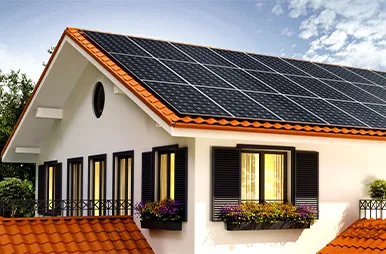Determining the Optimal Size for Solar Panel Arrays in Residential Installations
Understanding Solar Panel Array Size A Key to Efficient Energy Production
As the world increasingly transitions towards sustainable energy sources, solar energy has emerged as a leading contender. At the heart of solar energy systems are solar panel arrays, which play a critical role in determining the efficiency and output of solar energy production. Understanding the concept of solar panel array size is essential for homeowners, businesses, and investors who are considering solar energy installations.
What is Solar Panel Array Size?
Solar panel array size refers to the total surface area or number of solar panels installed in a solar energy system. This size can significantly influence the system's energy output, efficiency, and overall cost. A larger array typically generates more electricity, but it also occupies more space and incurs higher initial costs. Conversely, a smaller array might fit within a limited space but may not meet the energy needs of a household or business.
Factors Influencing Solar Panel Array Size
1. Energy Needs The primary factor in determining the size of a solar panel array is the energy consumption of the space it serves. Homeowners can assess their energy needs by reviewing past electricity bills to determine the average kilowatt-hours (kWh) used each month. Businesses often have more complex energy requirements due to larger equipment and extended operational hours.
2. Solar Panel Efficiency Today's solar panels come in various efficiencies, typically ranging between 15% and 22%. Higher efficiency panels can convert more sunlight into electricity, meaning fewer panels are required to meet the same energy demand. For example, if a household requires 900 kWh per month, high-efficiency panels may allow for a smaller array, saving space and potentially costs.
3. Available Roof Space The physical dimensions of a roof or installation site greatly affect the size of an array. Homeowners with limited roof space must carefully consider how many panels they can install. Roof orientation, angle, and shading from trees or nearby buildings also play a role in determining the optimal array size.
4. Location and Climate The geographical location significantly impacts solar energy production. Regions with high solar insolation—areas that receive the most sunlight—can generate more electricity with fewer panels. In contrast, locations with frequent cloud cover or shorter daylight hours may require a larger array to achieve the desired energy output.
solar panel array size

5. Future Energy Needs When sizing a solar panel array, it is wise to consider future energy needs. Home expansions, the addition of electric vehicles, or increased energy consumption can all affect energy requirements down the line. Planning for growth can help avoid the cost and hassle of expanding the system later.
Calculating Solar Panel Array Size
To determine the necessary size of a solar panel array, users can take the following steps
1. Calculate Monthly Energy Use Assess the total kWh used each month. This information is typically available on electricity bills.
2. Estimate Solar Production Capacity Research local solar insolation values to estimate how much energy the installed panels can produce annually.
3. Determine Panel Output Look into the specifications of your chosen solar panels to understand their output in watts.
4. Size the Array Use the following formula to calculate the number of panels required \[ \text{Number of Panels} = \frac{\text{Monthly Energy Use} (kWh)}{\text{Average Daily Sun Hours} \times \text{Panel Output} (kW)} \]
Conclusion
Selecting the right solar panel array size is crucial for maximizing the efficiency of a solar energy system. It requires a detailed understanding of energy needs, panel efficiency, available space, and local sunlight conditions. By considering these factors, individuals and businesses can make informed decisions, ensuring their investment in solar energy provides maximum energy savings and sustainability benefits. As the renewable energy landscape evolves, embracing solar technology can lead to significant environmental and financial returns, making the exploration of solar panel array sizes not just a technical exercise, but a step towards a greener future.
-
Unlocking Energy Freedom with the Off Grid Solar InverterNewsJun.06,2025
-
Unlock More Solar Power with a High-Efficiency Bifacial Solar PanelNewsJun.06,2025
-
Power Your Future with High-Efficiency Monocrystalline Solar PanelsNewsJun.06,2025
-
Next-Gen Solar Power Starts with Micro Solar InvertersNewsJun.06,2025
-
Harnessing Peak Efficiency with the On Grid Solar InverterNewsJun.06,2025
-
Discover Unmatched Efficiency with the Latest String Solar InverterNewsJun.06,2025







